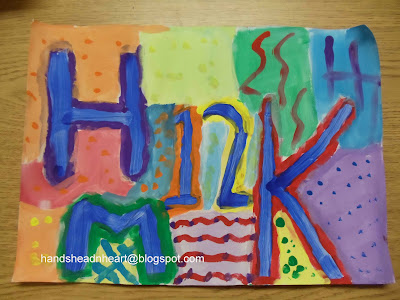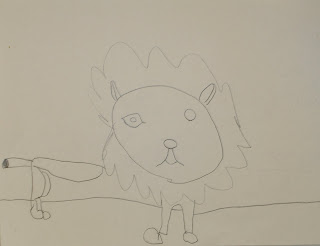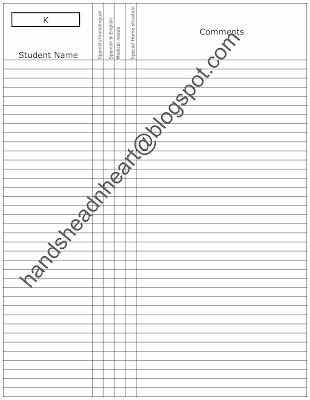So let's pretend that I have had all of my
Special Needs lists returned (all but 2 at last count). Now I need to enter that info onto my class lists for daily reference.
I use my class lists for grades, attendance and behavior incidents. In addition, my lists include the class code, teacher's name, classroom number and the phone extension for that room.
Here's an example of one of my 4th grade lists:
In the upper left hand corner is:
class code
Teacher name
room #
Ph #
Student names are listed on left hand side. That vast wasteland of empty cells in the spreadsheet will soon be filled with attendance, grade and behavior notations. Dates of class and descriptions of art projects are written at the top of each column.
Now you've probably noticed all the fancy schmancy colors & patterns going on in the student name column so let me explain...it's not just there for decoration (although I may tell the kids that if they go snooping!).
I use different colored fonts to designate different needs of students. This particular class is an SEI group (Structured English Immersion). Students in this room are still learning English - English skills can range from monolingual (Spanish), Pre-emergent, Emergent to Intermediate. Student names in this class are in a medium blue font with the exception of those who are monolingual (dark blue), those who receive Resource or Speech services (violet) or Non-reader (red font).
Several of these students have been identified as far below grade level and are given specific interventions to improve their learning. If there is no improvement over 60 days, they will be tested for SPED. I've designated them by highlighting their name space with pink. For students who are both SPED and non-readers, their name is violet and the background is a red diagonal pattern.
The numbered spaces to the left of names denote medical needs. I use red for allergies (food, bees,etc.), asthma, ADHD w/Rx or any other condition stated on the Special Needs list. Yellow means they may use the restroom as needed per nurse's direction. The specifics of the 'red' condition are written on the sheet directly under this one for easy reference...
This second example is from one of my Gifted Cluster classes - we have one of these designated at each grade level, K - 5. The gifted students in these groups receive services from a certified Gifted teacher who travels to our site once a week.
Gifted student names are in a green font. One of these students also receives Speech services so there is a violet diagonal line pattern in the name space as well. You'll see several kids that are highlighted in pink again because there is quite the range of abilities in these rooms. Something to keep in mind when I'm planning lessons...
Before the days of affordable color printers, colored pencils and highlighter markers were always at my side! Printing in color is a real timesaver but even coloring by hand paid off in the end.
Although this may seem like a lot of work (and it is - initially), the results are well worth it. A quick look through my lists every morning remind me of the learning needs of each of my groups that day which leads to far more successful lessons with each set of learners...










































































































































